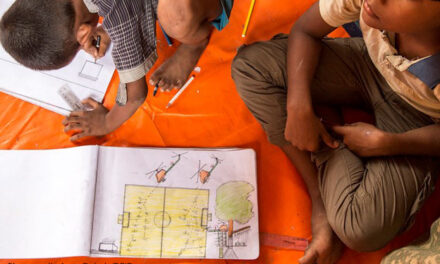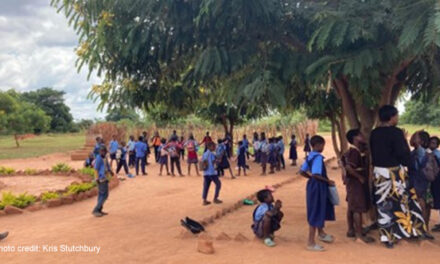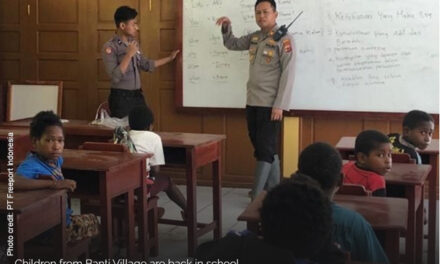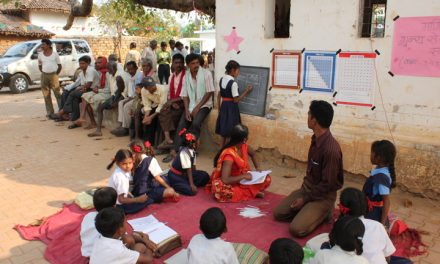This blog was written by Dr Anna Riggall, Head of Research at Education Development Trust. This article was originally published on the Education Development Trust website.
In the context of Covid-19-related disruption to education systems all over the world, it is crucially important to ensure that the most vulnerable pupils are protected. Girls, children with special educational needs and disabilities (SEND), and those in poor, remote or pastoralist communities are widely acknowledged to be among the most at-risk of experiencing a disrupted – or not completing – education. As governments around the world seek to navigate this crisis, our research team has produced a series of reports examining the key considerations for ensuring continuity of education for all.
 These reports were produced at great speed in response to the ongoing crisis, commissioned by the EdTech hub. The three latest reports – on ensuring education continuity for marginalised girls and disadvantaged students, including those with SEND, and on educational provision in emergencies – form part of the EdTech hub’s coronavirus resources, which you can access here.
These reports were produced at great speed in response to the ongoing crisis, commissioned by the EdTech hub. The three latest reports – on ensuring education continuity for marginalised girls and disadvantaged students, including those with SEND, and on educational provision in emergencies – form part of the EdTech hub’s coronavirus resources, which you can access here.
While each report makes specialised, evidence-based recommendations to system leaders, there are some distinct themes which emerged across all three reports, which may be valuable as we continue to respond to this unprecedented challenge.
In the context of school closures, remote learning solutions should be deliberately designed for inclusion.
While ed-tech solutions have taken centre stage in many countries, the reality is that they will be inaccessible to many students. System leaders need to carefully consider how to ensure that remote learning solutions are accessible to all, for example, by conducting a rapid audit of available resources. Such audits have been successfully conducted in Papua New Guinea, South Korea and Chile, helping to design distance learning regimes that work for all students. This may involve a multi-modal, multi-technology approach, making use of a mix of high-tech, low-tech and no-tech solutions to maximise the number of students who can access quality resources.
Moreover, remote learning solutions may also need to account for differences in individual circumstances and responsibilities. For example, poorer students may be required to help with income-generating activities for their families, and traditional gender roles may require girls to take on more household chores or caring responsibilities. Remote learning methods which allow for asynchronous lessons may help to increase the inclusion of those pupils with these priorities and responsibilities, enabling them to learn when they are free to do so.
It may also be helpful to ensure that remote learning programmes model inclusion in their delivery. For example, including female representatives as instructors in online, video- or radio-based educational programmes can help to improve the participation of marginalised girls. Meanwhile, mainstream resources can be adapted for students with SEND by specialist teams, as has been the case in Costa Rica.
Ensure the needs of the most vulnerable are prioritised in a remote education strategy.
Poor, marginalised and disadvantaged students are most at risk of being unable to continue with their education when schools are closed, to fall behind, or to not return to education when schools reopen. To avoid a widespread loss of learning in these groups, their specific needs must be considered beyond the delivery of remote lessons. In some cases, families will be driven by economic necessity to discontinue their children’s education, with pupils instead being required to generate income or enter an early marriage. There is some evidence that the continuance of school feeding programmes and cash transfers can be helpful in preventing this. The latter in particular can be enabled though technology (for example, through mobile money transfers).
Moreover, disadvantaged pupils – and especially girls – are likely to face an increased risk of violence, abuse and exploitation in an emergency context. Safeguarding efforts are therefore critically important in this context. Again, technology can provide a means for addressing this problem, enabling victims to report abuse and seek support, even where this is no longer possible in-person. Technological platforms may also be an effective way to launch effective back-to-school campaigns for girls (and other vulnerable groups) in due course. Such campaigns should include support for girls who have been married or become pregnant during the crisis, to help them continue their education after the pandemic.
Collect disaggregated data to better understand how disadvantaged students engage with education in crises.
There is a distinct need for data disaggregated by sex, age, disability status and other potential markers of marginalisation. Such data can be generated in real-time using education technology, but low-cost data-focused initiatives can also be effective, such as Uganda’s SMS-based EduTrac system. Such data is essential to identify and monitor the progress of marginalised pupils, but it also helps policymakers to understand the reach and effectiveness of remote education initiatives. Currently, very few published studies on education in emergencies currently differentiate outcomes by such markers of marginalisation, but such differentiation would be a valuable addition to the global evidence base. Introducing such data collection during crises may also help to stimulate wider, system-level data strengthening, helping system leaders to make better use of education data and to build potentially more resilient education systems.
To read the reports in full, please visit the EdTech hub resource site.






Great article covering many critical issues.
Thanks Mary!